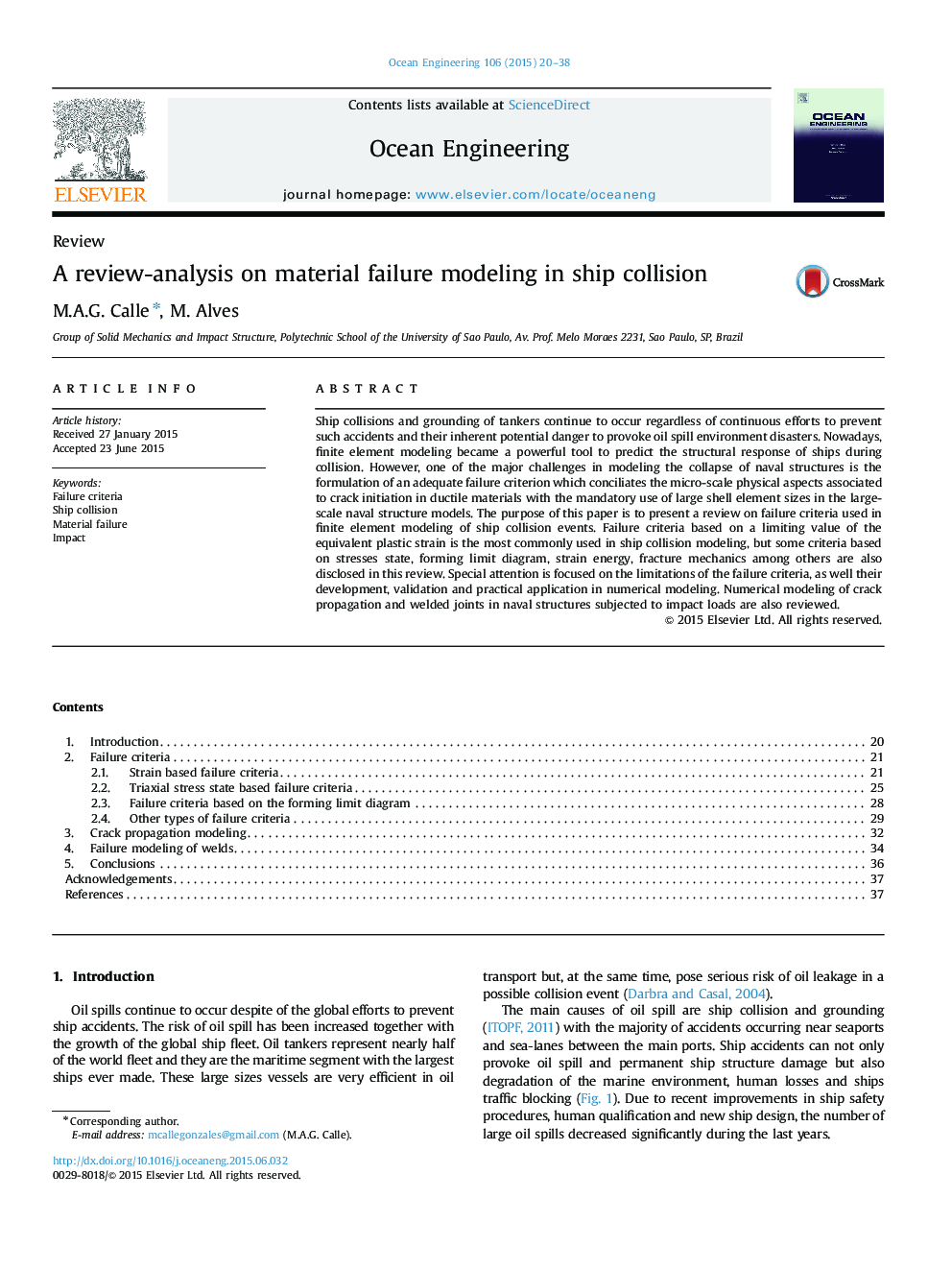| Article ID | Journal | Published Year | Pages | File Type |
|---|---|---|---|---|
| 1725242 | Ocean Engineering | 2015 | 19 Pages |
Abstract
Ship collisions and grounding of tankers continue to occur regardless of continuous efforts to prevent such accidents and their inherent potential danger to provoke oil spill environment disasters. Nowadays, finite element modeling became a powerful tool to predict the structural response of ships during collision. However, one of the major challenges in modeling the collapse of naval structures is the formulation of an adequate failure criterion which conciliates the micro-scale physical aspects associated to crack initiation in ductile materials with the mandatory use of large shell element sizes in the large-scale naval structure models. The purpose of this paper is to present a review on failure criteria used in finite element modeling of ship collision events. Failure criteria based on a limiting value of the equivalent plastic strain is the most commonly used in ship collision modeling, but some criteria based on stresses state, forming limit diagram, strain energy, fracture mechanics among others are also disclosed in this review. Special attention is focused on the limitations of the failure criteria, as well their development, validation and practical application in numerical modeling. Numerical modeling of crack propagation and welded joints in naval structures subjected to impact loads are also reviewed.
Related Topics
Physical Sciences and Engineering
Engineering
Ocean Engineering
Authors
M.A.G. Calle, M. Alves,
